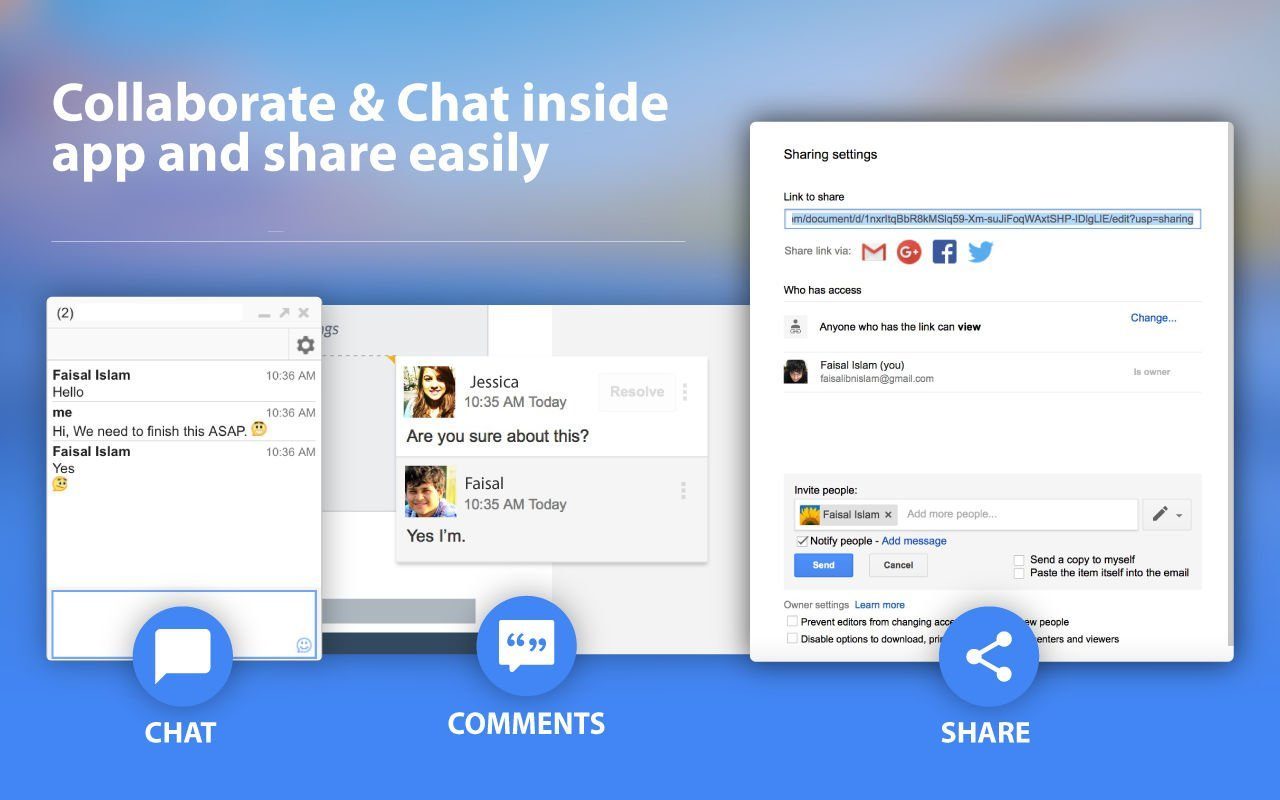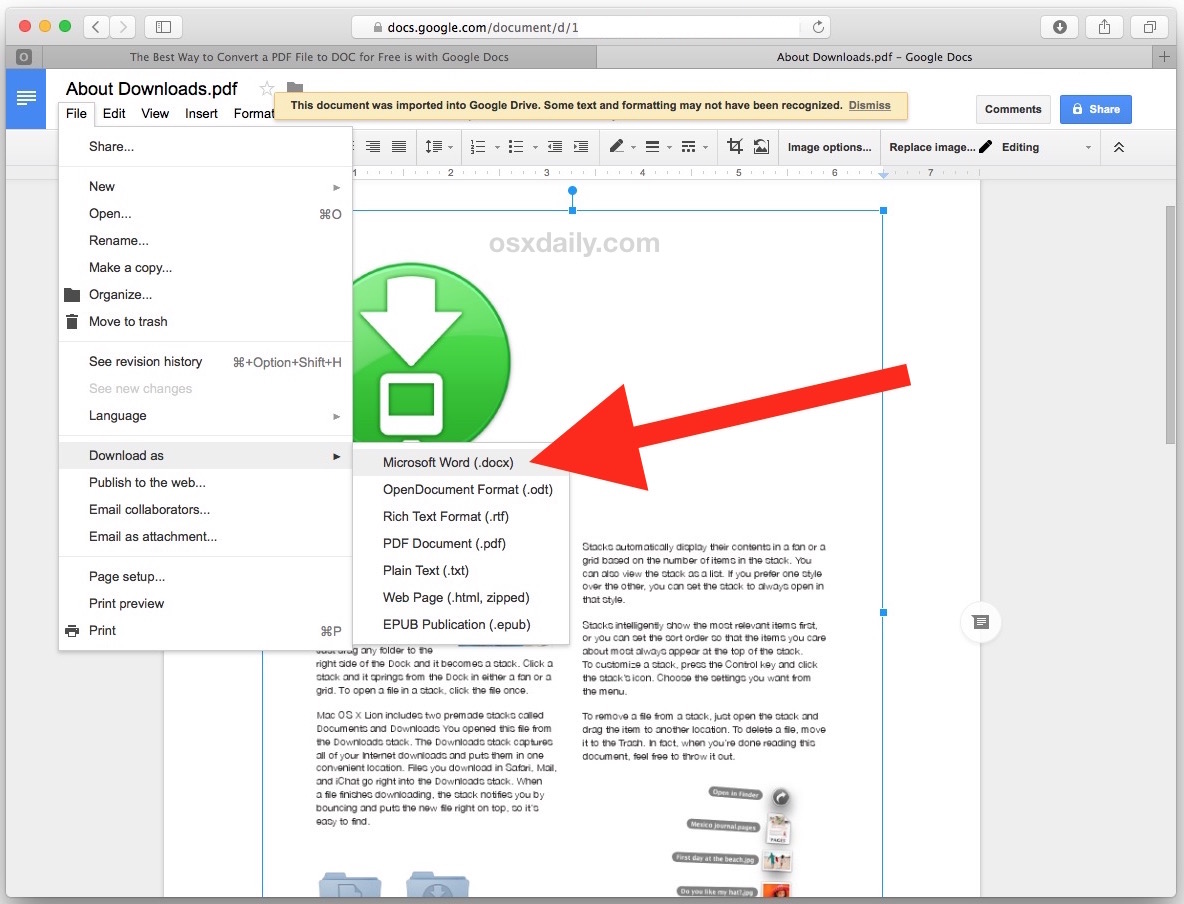Jul 07, 2017 How to Convert a Single Document. Because Google Docs are in an online format, we can’t just import them into Word! In order to use them within Microsoft Word, we’re going to need to convert Google Docs to Word’s DOCX format, then download it afterward. Use keyboard shortcuts in Google Docs to navigate, format, and edit. Note: Some shortcuts might not work for all languages or keyboards. To open a list of keyboard shortcuts in Google Docs, press Ctrl + / (Windows, Chrome OS) or ⌘ + / (Mac). To search the menus, press Alt + / (Windows, Chrome OS) or Option + / (Mac). You can also use menu. 70 time-saving Hotkeys for Google Docs. Extensive, exportable, wiki-style reference lists for Keyboard Shortcuts/Hotkeys.
Citrix for mac. May 02, 2018 Citrix Workspace app is a new client from Citrix that works similar to Citrix Receiver and is fully backward-compatible with your organization’s Citrix infrastructure. Citrix Workspace app provides the full capabilities of Citrix Receiver, as well as new capabilities based.
This step-by-step Google Docs timeline tutorial explains how to create professional timelines
from your Google spreadsheet.
Professionals who need to present project plans and schedules in a visual way can use Google Docs' Bubble chart feature and a bit of formatting to create a basic timeline. The resulting visual can be accessed and edited online from any device, but, despite this convenience, it may lack the flexibility and accuracy needed for project reporting or client reviews.
Those who want to show more details or update the timeline regularly can create clear, impressive visuals easily using Office Timeline Online, a free web tool that automates the entire process and also lets you download the resulting graphic as a native PowerPoint slide. Below, I will explain how to make a timeline both manually in Google Docs and automatically with Office Timeline. To learn how to create a Gantt chart in Google Docs, please see our Gantt tutorial here.
Which tutorial would you like to see?
Creating timelines online automatically takes:
2mins
Creating Google Docs timelines manually takes:
30mins
How to manually make a timeline in Google Docs
1. List your project milestones and dates in a table

Start a new Google Docs spreadsheet by clicking on the Blank type from the Template Gallery.
Enter the key milestones or events of your project in one of the columns, as seen in the image below. I'd recommend keeping the milestone descriptions as short as possible to ensure they'll be fully visible on the timeline.
In the next column, add the due date for each of your milestones.
To create a timeline in Google Docs, your table also needs to include a third column with plotting numbers. Therefore, add this one next to your milestones dates and enter a sequence of numbers such as 1, 2, 3, 4 as in the example below. These plotting points will be used to define the vertical placement of each milestone on your timeline graphic.
2. Create a basic timeline by setting it up as a Bubble chart
Select all the data in your table and go to Insert -> Chart on the Google Docs ribbon.
In the Chart Editor on the right side of the page, click on the downward arrow next to the Chart Type section.
Now, from the Chart Type menu, select the Bubble chart type under the Scatter category, and Google will automatically generate a simple timeline out of your selected data.
Note: Don’t worry if you notice some of your milestones are off the Chart Area. It’s an aspect we'll deal with right in the following steps, so your timeline items will be all fully visible.
First, if your graphic looks too crowded or some of your milestone titles overlap, resizing it may ensure a better fit. Simply click on the Chart Area to select it and drag its sizing handles to reach the desired height and width.
Now it's time to adjust the Vertical Axis to make the uppermost milestones fully visible. To do so, first go the Customize tab of the Chart editor (pictured below). You can open the Chart editor at any time by double-clicking your visual.
Here, click on the Vertical axis section to open it.
Type '0' in the text field under Min. In the Max field, you will need to add a value higher than the largest plotting number you've entered in your data table. In my case, the Max value will be '5'.
If you want to be able to download those files and play them on your computer, or if you want to transfer them to a device such as an iPhone or iPad, then you need to authorize that computer for your Apple ID. https://bitcoinlucky.netlify.app/how-to-authorize-computer-for-itunes-mac.html. If you have signed into iTunes with your Apple ID, but are not able to play any of your media files, then you have probably not yet authorized that computer for your Apple ID.Authorize a Computer in iTunes for WindowsNote that you can only authorize up to 5 computers for one Apple ID.
In my example, I also wanted to remove all those horizontal gridlines that cut across the graphic as I felt they overcrowded the timeline needlessly. If you wish to do the same, open the Gridlines section on the Chart Editor and set the Major gridline count to 1 for the Vertical axis.
While you're still in the Gridlines section, you may wish to add more vertical gridlines to make it easier to see the relative distance between milestones. Click on the downward arrow next to Vertical axis and select Horizontal axis from the small drop-down menu that appears. Here, set '2' as the value for the Minor gridline count.
Once you’ve completed all the steps above, your graphic should look like the one below:
Now that your timeline is properly formatted, you can apply some styling choices to personalize it. The Customize tab in the Chart Editor lets you easily set a different color for your milestones, texts or dates, change sizes and fonts, add a chart title, and more.
However, the trickier part comes when you want to recolor individual milestone markers (bubbles) to differentiate them or show their status because Google Docs, by default, applies your formatting options to the whole series. But no worries – I will show you below how you can do this too.

To help Google see your milestones as individual items, you will need to go back to your data table and create a 4th column that will break them up into categories. In this new column, you will enter a value or category name for each milestone. In my example, I'll differentiate my milestones by Status, as seen in the image below.
Note: If you wish some of your milestones to be colored the same, assign them the exact same value or category name.Once you've filled out your milestone categories, to apply them to your timeline, you need to:
i. Go to the Data tab in the Chart Editor.
ii. Click on the small spreadsheet icon on the right side of the Add Series box.
iii. Click inside the What data? text box, and then select the whole category column from your table. The What data? box will be auto-filled with the column's cell range.
iv. Click OK.
External hard drive for macbook air. Google Docs will automatically apply a different standard color to each of your milestone categories and it will also add a legend, as seen in the image below:
If you want to change the default colors:
i. Navigate to the Customize tab of the Chart editor.
ii. In the Series section, use the 'Apply to' series selector to choose the milestone category you want to recolor.
iii. Under Color, select a new shade for your milestone.
After trying out several colors, adding a title and tweaking font sizes, my final Google Docs timeline looks like this:
How to make a timeline online automatically
Manually building a timeline with Google Docs can be time-consuming, and the end result may lack the clarity and precision expected by clients and executives. An online timeline generator like Office Timeline's may be a better-suited alternative for creating professional-looking visuals required in business or project presentations.
Below, I will show you how to automatically make a timeline in Office Timeline Online and customize or update it with a few clicks. To begin, open the free tool in your browser and follow the steps below.
1. Enter your timeline data into Office Timeline Online
From Office Timeline's New tab, click on Timeline from scratch ('+') or select one of the various templates available to start building your graphic. If you usually manage your data in Excel, you can also import an existing .xls schedule into the web tool and turn it into a timeline. For this demonstration, however, I will create my visual from scratch.
After you select the type of timeline you want to make, Office Timeline Online will open the Data View tab, where you can insert and edit data.In the Data View, list your project's key milestones and their due dates. You can also make a few quick customizations here, such as selecting the color and shape for each milestone marker. As you add or edit items, the web tool will update your visual in real time and show you a live preview to the right of your data list. When you're ready, click on the preview or select the Timeline tab above the data list to go to the Timeline View, where you can style every detail on your graphic.
Once you've created your visual, personalizing and updating it is easy with Office Timeline. For instance, the Timeline View allows you to instantly change colors, shapes, positions, fonts and date formats, add extra details such as Elapsed Time, or hide items your audience doesn't need to see. If you look at my final timeline below, you'll see I used multiple milestone shapes and sizes, customized texts to draw attention to important checkpoints, and added a Today Marker for a clearer view of where the project is standing.
Twitter hasn’t released its Catalyst app yet, and Netflix has no plans to release one at all.Further Reading:. Hazel application for mac. It’s possible that macOS Catalina has unresolved issues that Apple isn’t talking about.
If you have a free account, the web app will save your timeline securely in the cloud so you can access it whenever you need it and update it fast if plans change. Drag & drop milestones in Timeline View to instantly adjust their due dates, or use the Data tab to quickly add, edit or remove items. When done, download your timeline as an imagine or as a native .pptx slide that anyone who has PowerPoint can view, update or present.
See our free timeline template collection
Download Google Docs Desktop
This free timeline template gallery was created for professionals who need to make stylish, easy-to-understand timelines for important presentations. Download the desired template to use it in PowerPoint or, where available, click on the Edit Online button to open it with Office Timeline and update it easily.